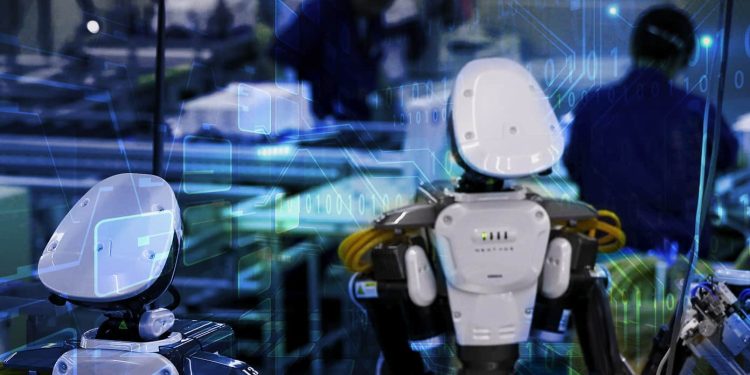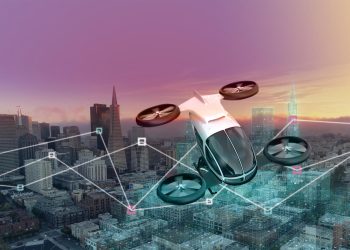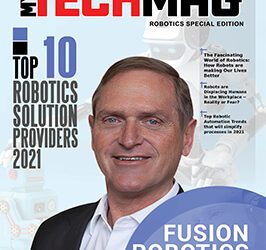In the 90s, when U.S. banks started adopting automated teller machines, human tellers started fearing that they might soon lose their jobs. We can find similar stories in several other sectors, such as healthcare, finance, travel, and tourism, where there are increasingly fraught predictions about the future of work in the age of robots. The Century Foundation’s new report predicts that as many as 50% of all workers are at risk of losing their jobs to automation. So, can robots really replace humans at work? What will be their impact on workers’ jobs and wages? What are some possible solutions to address this problem? Let’s find out.
Automation – The Fourth Industrial Revolution?
As the Industrial Revolution took place in the early 19th century, it changed the economy from being agricultural to urban. Another major shift happened with the increasing adoption of electricity by industries and technological advancements, such as the internal combustion engine and telephone. This was termed as the second industrial revolution. Digitalization and the adoption of computers and the internet marked the beginning of the third industrial revolution. As the growth of automation and innovations such as cloud technology continues to happen, some believe we have stepped into the fourth industrial revolution.
Low-skill, less-educated workers are the most affected
With the onset of the fourth industrial revolution in the form of automation and the increased deployment of robots, an important long-run change expected in the U.S. labor markets is the decline of low-skill occupations, like manufacturing and production jobs. Robots are displacing less-educated and minority workers in the Midwest manufacturing industry at the highest rates, the TCF report shows. With manufacturing industries experiencing the fastest growth in robot adoption, many workers were expected to lose their jobs, but the opposite happened. There has been a strong economic recovery over the past decade, which saved many jobs and slowed automation in the United States. In the absence of such a strong recovery, robots would have continued to displace many more human workers.
The impact of robots varies across industries, workers, and regions
Automation offers increasingly tantalizing opportunities in every industry, but there always has been fear of robots taking over human jobs since robots’ introduction. However, things are not as grim as predicted by many. The impact of robots varies across groups of industries, workers, and regions. For example, the TCS study found that the automotive industry has adopted robots more than other sectors. Workers living in Arizona, Texas, and Michigan are most likely to be affected by automation.
Robots Complement Workers in Some Service Industry Settings
While it’s true that the adoption of robots does affect employment, esp. in the production and manufacturing sector, it is also true that robots complement workers. An evidence of this has been observed in Japanese nursing homes, where robots assist with the most tedious tasks, such as lifting patients out of their beds. We can find several similar stories in many other industries, such as eCommerce, where the employment numbers are going up despite the introduction of automation. The fact is that, with human being’s ability to interpret and to initiate and apply ideas, it’s very hard to replace human workers completely.
Automation can’t beat human intelligence in many areas
Most people like something that’s tailored to them. Even in the industries such as automobiles, where there is a focus on increasing automation, the special ‘human touch’ is always required. From colors to accessories, people love customizing their cars as per their liking. This level of personalization will require a ton of retooling and a ton of programming. For this reason, companies like Mercedes-Benz, Toyota, and General Motors assign tasks that are monotonous, dirty, repetitive, and dangerous, such as welding and spray-painting to the robots. On the other hand, human help is taken in places like the final assembly area, where more intricate work is required, such as- checking the cars for fit, finish, quality, and alignment. Companies rely on human judgment and skills to determine whether the final product agrees with the customer’s customization request.
Experts differ in opinion
While, the technology experts like the late physicist Stephen Hawking and Tesla and SpaceX founder Elon Musk warned that the machines would eventually exceed human capabilities, move beyond our control to trigger the collapse of human civilization. The other experts look at the adoption of robots with great optimism. According to the experts’ optimistic group, Machine intelligence is still a very long way from matching the full range of human capabilities. Even if we consider the developments now coming through the pipeline, we have little to no reason to stress mass unemployment.
Possible solution – Training and Education
Robots have a direct or indirect effect on workers at all education levels, but the workers without college degrees have been found to be more impacted than those with a college degree or more. Therefore, there is an overwhelming need for Governments and employers to invest in training and developing the workers’ key skills. This will not just offset disruption but also facilitate the transition into an automated future. Training and Education of workers will enable more people to gain employment as we move into an increasingly automated world. Educating and training workers will also help them transition into roles where they’re working more closely with robots.
Final words
Robotics technology is expected to expand even further in the future. It is predicted that robots will quadruple worldwide by 2025. Therefore, a holistic approach is required to increase the adoption of robots and create more jobs. Robots increase productivity and are very important for continued growth, but at the same time, they are taking over human jobs and reduce labor demand. But, that doesn’t mean we should be opposed to robots. It implies that a more holistic approach is required, where automation is combined with technological changes to create more jobs that require human skills and expertise.
Overall, it is safe to conclude that as more and more robots are deployed in various industries, it won’t be the human workforce’s apocalyptic end as many fear. With the right planning and approach, it could be the next step toward a brighter future.







